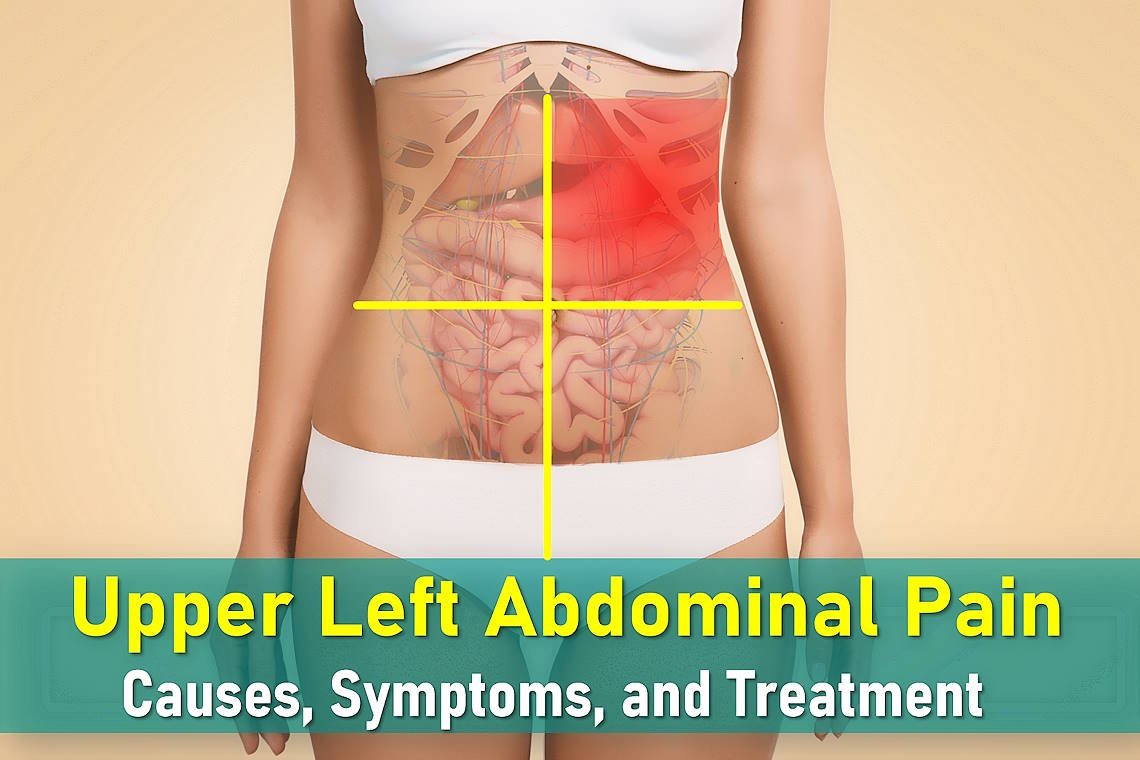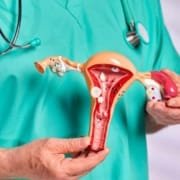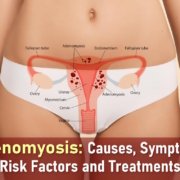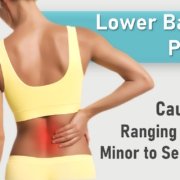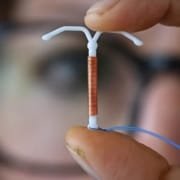Upper Left Abdominal Pain: Common Causes and When to See a Doctor
Pain in the upper left abdomen beneath the ribs can arise from various causes, ranging from minor digestive issues to serious organ injuries. This area houses several vital organs, including the spleen, stomach, pancreas, left kidney, and parts of the colon. Understanding the potential sources of discomfort can help you identify when to seek medical attention.

Where Is the Upper Left Abdomen Located?
To locate the upper left abdomen, imagine dividing your belly into four sections vertically and horizontally. The upper left quadrant (LUQ) is the area below your left ribcage. Organs in this region include:
- Spleen: Filters blood and supports immunity.
- Stomach: Digests food and secretes acids.
- Pancreas: Produces digestive enzymes and insulin.
- Left Kidney: Filters waste from the blood.
- Colon: Processes waste before elimination.
Pain here may originate from these organs or be “referred” from other areas, complicating diagnosis without professional evaluation.
Common Causes of Upper Left Abdominal Pain
Spleen-Related Issues
The spleen is a soft organ located behind the stomach on the upper left side of the abdomen. It plays a role in filtering blood and fighting infections. Pain in this area may be related to:
- Enlarged Spleen: Infections such as mononucleosis or conditions like leukemia can cause the spleen to swell, leading to a dull, persistent ache in the upper left abdomen. You may also feel full quickly when eating.
- Ruptured Spleen: A blow to the abdomen, such as from a car accident or fall, can cause the spleen to rupture. This results in sudden, severe pain and requires immediate emergency treatment.
- Sickle Cell Crisis: People with sickle cell disease may experience sudden spleen pain during a crisis, often accompanied by other symptoms like fatigue or low oxygen levels.
Digestive Problems
Many gastrointestinal conditions can lead to pain in the upper left part of the abdomen:
- Stomach Ulcers: These can cause a burning or sharp pain that may be temporarily relieved by antacids. Nausea or vomiting may also be present.
- Indigestion (Dyspepsia): Often described as discomfort or bloating, this may occur after eating and can be accompanied by heartburn or acid reflux.
- Gastroenteritis: An infection of the stomach or intestines that can lead to cramping, vomiting, and diarrhea. Pain may spread throughout the abdomen, including the upper left side.
- Diverticulitis: Inflammation of small pouches in the colon, typically causing lower abdominal pain, but in some cases, it may affect the upper left area. Fever and changes in bowel habits are common.
- Inflammatory Bowel Disease (IBD): Conditions like Crohn’s disease or ulcerative colitis can cause chronic or recurring abdominal pain, diarrhea, and sometimes blood in the stool.
- Constipation: A buildup of stool in the colon can cause bloating and discomfort that may be felt in different parts of the abdomen, including the upper left.
- Irritable Bowel Syndrome (IBS): Characterized by bloating, cramping, and alternating constipation and diarrhea. Pain can sometimes radiate to the upper abdomen.
Other Potential Causes of Upper Left Abdominal Pain
Shingles (Herpes Zoster)
Shingles can cause a sharp, burning pain on one side of the body, including the upper left abdomen. This pain may appear a few days before the classic rash with blisters. The skin in the area may become sensitive to touch.
Kidney Issues
The left kidney is located toward the back but can cause pain that radiates to the upper left abdomen. Conditions to consider include:
- Kidney Stones: Intense, cramping pain that comes and goes, often spreading from the back to the front.
- Kidney Infection (Pyelonephritis): May cause a dull ache or sharp pain along with fever, chills, frequent urination, or pain during urination.
Aortic Conditions
The abdominal aorta, a major blood vessel, runs near the spine and can cause serious issues if damaged:
- Aortic Aneurysm: A weakened and enlarged section of the artery can cause deep, steady abdominal or back pain. If it begins to leak, the pain may intensify and become life-threatening.
- Aortic Dissection: A tear in the wall of the aorta causes sudden, severe pain that may be described as ripping or tearing. Emergency treatment is critical.
Pancreatic Disorders
Although the pancreas sits more centrally, problems with it can cause upper left abdominal pain:
- Pancreatitis: Inflammation of the pancreas leads to intense, constant pain that may radiate to the back. Nausea, vomiting, and a bloated feeling are common, especially after eating fatty foods or drinking alcohol.
- Pancreatic Cancer: Often difficult to detect early, it may present as vague upper abdominal or back pain, especially in later stages.
Less Common But Serious Causes
Cardiac and Lung Conditions
Sometimes, heart and lung issues can cause referred pain to the upper left abdomen:
- Heart Attack: While chest pain is typical, some heart attacks may present with upper abdominal discomfort, particularly in older adults or women.
- Pneumonia or Pleurisy: Infections or inflammation in the left lung may irritate the diaphragm, causing pain in the upper abdomen.
Systemic and Hormonal Conditions
Some whole-body conditions can also cause pain in the upper abdomen:
- Diabetic Ketoacidosis: A serious complication of uncontrolled diabetes that can cause abdominal pain, along with nausea, vomiting, and confusion.
- Addisonian Crisis: A sudden drop in adrenal hormones can lead to severe fatigue, low blood pressure, and abdominal pain.
- Acute Porphyria: A rare inherited condition that may cause episodes of abdominal pain, often triggered by medications or fasting.
Musculoskeletal and Referred Pain
Not all abdominal pain is internal:
- Muscle Strain: Overstretching or tearing of abdominal or chest wall muscles can cause pain that worsens with movement or pressure but improves with rest.
- Spinal Nerve Irritation: Problems like herniated discs or spinal arthritis may refer pain to the abdomen, depending on which nerves are involved.
- Pelvic Conditions: Although typically causing lower abdominal pain, issues like ovarian cysts or pelvic infections can sometimes cause discomfort higher up.
Upper Left Abdominal Pain in Specific Populations
During Pregnancy
Pregnant women can experience many of the same causes of upper left abdominal pain as anyone else, but there are also several pregnancy-specific factors that should be considered. These may include:
- Ectopic Pregnancy: Although rare in the upper abdomen, this life-threatening condition occurs when a fertilized egg implants outside the uterus, often in a fallopian tube. It usually causes sharp, one-sided pain in early pregnancy and requires immediate medical care.
- Pressure from the Growing Uterus: As the uterus expands, it can press upward against the stomach and diaphragm, causing a feeling of fullness or discomfort, especially after eating or when lying down.
- Increased Indigestion and Acid Reflux: Pregnancy hormones like progesterone relax the muscles of the digestive tract, slowing digestion and making acid reflux more likely. This can lead to burning discomfort in the upper abdomen.
- Urinary Tract Infections (UTIs): Pregnant women are more prone to UTIs due to changes in the urinary tract. While UTIs typically cause lower abdominal discomfort, they can occasionally lead to pain in the upper abdomen if the kidneys are affected.
If upper left abdominal pain during pregnancy is severe, persistent, or accompanied by symptoms like fever, bleeding, or dizziness, it’s important to seek medical advice promptly.
In Children
Diagnosing abdominal pain in children can be challenging. Younger children may not be able to accurately describe where or how it hurts, and the pain may not always be related to a serious condition. Common causes in children include:
- Constipation: A very frequent cause of abdominal discomfort in children. Pain may be crampy and come and go, and children may also have reduced appetite or feel bloated.
- Anxiety or Stress: Emotional stress can lead to real physical symptoms, including abdominal pain, especially around school or social situations.
- Stomach Viruses (Gastroenteritis): Viral infections often cause crampy abdominal pain along with nausea, vomiting, and diarrhea. The pain may affect various areas of the abdomen.
- Mesenteric Adenitis: This condition involves inflammation of the lymph nodes in the abdomen, usually during or after a viral illness. It can mimic the pain of appendicitis but often resolves on its own.
- Atypical Appendicitis: While classic appendicitis causes pain in the lower right side, in some children, it may start as vague discomfort near the belly button or upper abdomen before shifting location.
- Lower Lung Infections (Pneumonia): Especially in younger children, a left-sided pneumonia can sometimes irritate the diaphragm and cause pain in the upper left abdominal area.
If a child’s abdominal pain is severe, lasts more than a few hours, or is accompanied by fever, vomiting, or lethargy, medical evaluation is recommended.
When to Seek Medical Attention
Not all upper left abdominal pain is serious, but certain symptoms may signal a condition that needs prompt evaluation. You should contact a healthcare provider if you experience any of the following:
- Severe or persistent pain: Especially if the pain is sharp, sudden, or getting worse over time.
- Unexplained weight loss or appetite changes: A noticeable drop in weight or ongoing loss of appetite without a clear reason should always be checked out.
- Vomiting blood or passing dark, tarry stools: These may be signs of internal bleeding in the stomach or intestines and require urgent attention.
- High fever with chills: May indicate an infection, such as a kidney or abdominal organ infection.
- Difficulty breathing or swallowing: If abdominal pain is accompanied by trouble breathing or chest pressure, seek emergency care as these may be signs of a serious heart or lung issue.
Diagnostic Approach
When you visit a healthcare provider for abdominal pain, they will begin with a step-by-step evaluation to determine the cause. This usually includes:
- Physical examination: Your doctor will gently press on different parts of your abdomen to check for tenderness, swelling, or unusual sensations.
- Medical history review: You’ll be asked about the nature of your pain, any recent illnesses, medications, past surgeries, and any other symptoms you’ve noticed.
- Basic tests: Depending on your symptoms, the doctor may request initial lab tests, including:
- Urinalysis: Helps detect urinary tract infections, kidney stones, or other kidney-related issues.
- Blood tests: Used to check for signs of infection, inflammation, anemia, or abnormal liver or kidney function.
- Pregnancy test: Recommended for women of childbearing age when pregnancy-related causes need to be ruled out.
- Stool tests: Can help identify infections, bleeding, or digestive disorders.
Advanced Testing Options
If the initial evaluation doesn’t reveal a clear cause, or if symptoms are more serious, your provider may recommend additional diagnostic tools such as:
- Imaging tests: Ultrasound, CT scan, or MRI can help visualize organs like the spleen, pancreas, kidneys, and intestines for signs of swelling, injury, or growths.
- Endoscopic procedures: An upper endoscopy or colonoscopy may be done to look directly inside the stomach or colon for ulcers, inflammation, or blockages.
- Cardiac testing: An electrocardiogram (ECG) or chest X-ray might be necessary if symptoms suggest heart or lung involvement, especially when pain is near the ribs or chest area.
Treatment and Prognosis
Treatment depends entirely on the underlying cause of the pain. Once a diagnosis is confirmed, your healthcare provider will recommend an appropriate treatment plan. Possible approaches include:
- Lifestyle changes: Minor issues such as indigestion or constipation may improve with changes in diet, hydration, physical activity, and stress management.
- Medications: Infections often require antibiotics. Conditions like acid reflux or ulcers may need antacids or prescription medications to reduce stomach acid.
- Emergency care: Life-threatening conditions, such as a ruptured spleen or aortic dissection, require immediate surgical or hospital-based treatment.
The outlook, or prognosis, varies widely based on the cause. Many conditions are treatable and improve with proper care, but it’s important to follow your provider’s guidance for the best results.
Final Thoughts on Upper Left Abdominal Pain
While occasional mild discomfort in your upper left abdomen may resolve on its own, persistent or severe pain warrants medical attention. This area contains vital organs that could signal anything from digestive issues to life-threatening conditions. By understanding potential causes and recognizing warning signs, you can make informed decisions about seeking care. Always consult a healthcare provider for proper diagnosis and treatment tailored to your specific situation.
Frequently Asked Questions
What organ is most likely to cause pain in the upper left abdomen?
The spleen, stomach, pancreas, and left kidney are the most common organs responsible for upper left abdominal pain. Digestive issues like gastritis or ulcers frequently cause discomfort in this area.
When should I go to the ER for left upper quadrant pain?
Seek emergency care for: sudden severe pain, pain with fever/chills, vomiting blood, black/tarry stools, difficulty breathing, or pain radiating to your back or shoulder. These could indicate serious conditions like spleen rupture or heart attack.
Can gas cause upper left abdominal pain?
Yes, trapped gas can cause sharp, crampy pain anywhere in the abdomen, including the upper left region. However, if pain persists beyond 24 hours or worsens, consult a doctor to rule out other causes.
How do I know if my left side pain is serious?
Warning signs include: pain that worsens over time, accompanies weight loss, interferes with daily activities, or occurs with fever/vomiting. When in doubt, it’s always safer to get medical evaluation.
Can stress cause left upper abdominal pain?
Stress can contribute to digestive issues like IBS or functional dyspepsia that may cause left-sided discomfort. However, persistent pain should be evaluated to rule out physical causes.
What does pancreatic pain feel like?
Pancreatic pain typically presents as a severe, steady ache in the upper abdomen that may radiate to the back. It often worsens after eating and may be accompanied by nausea/vomiting.

